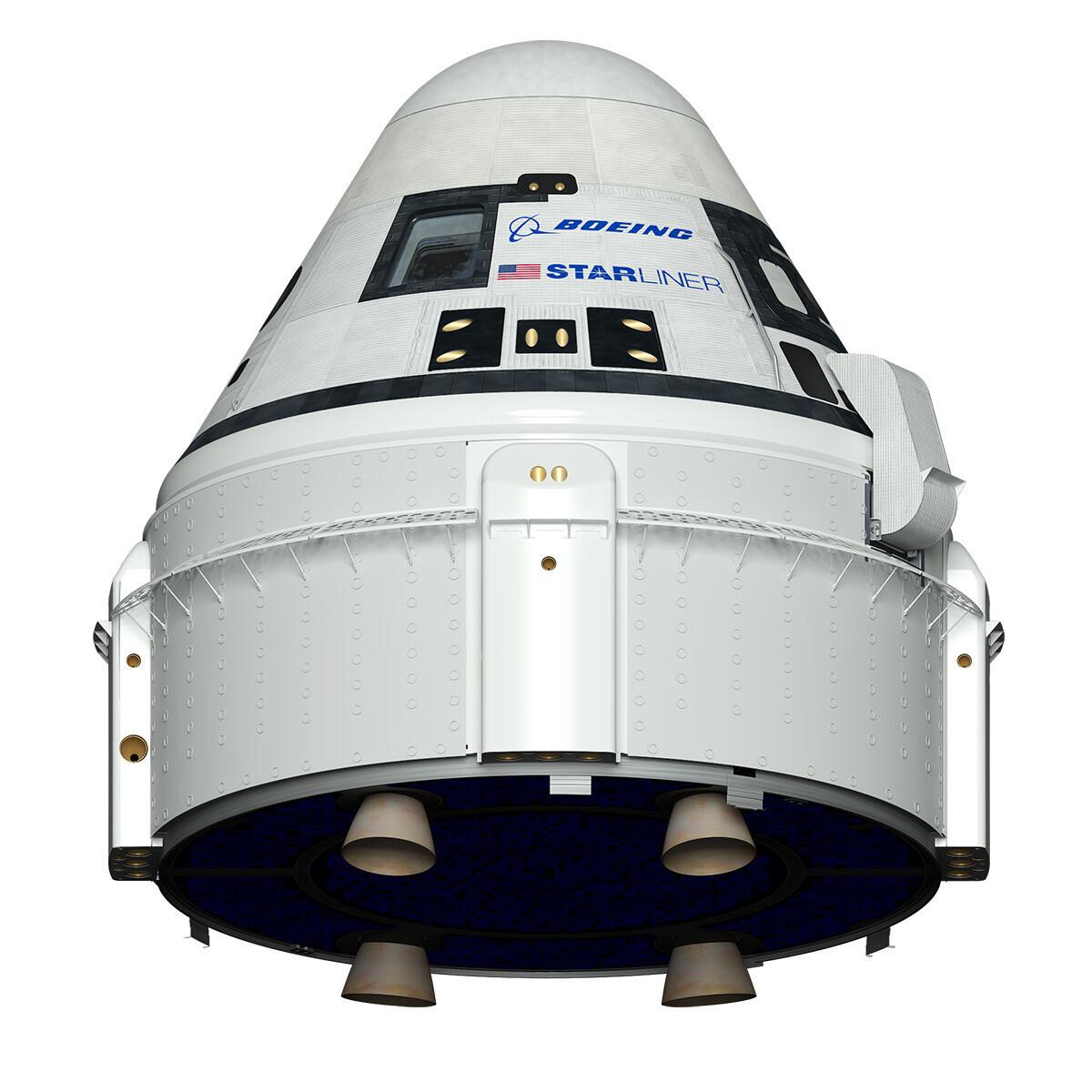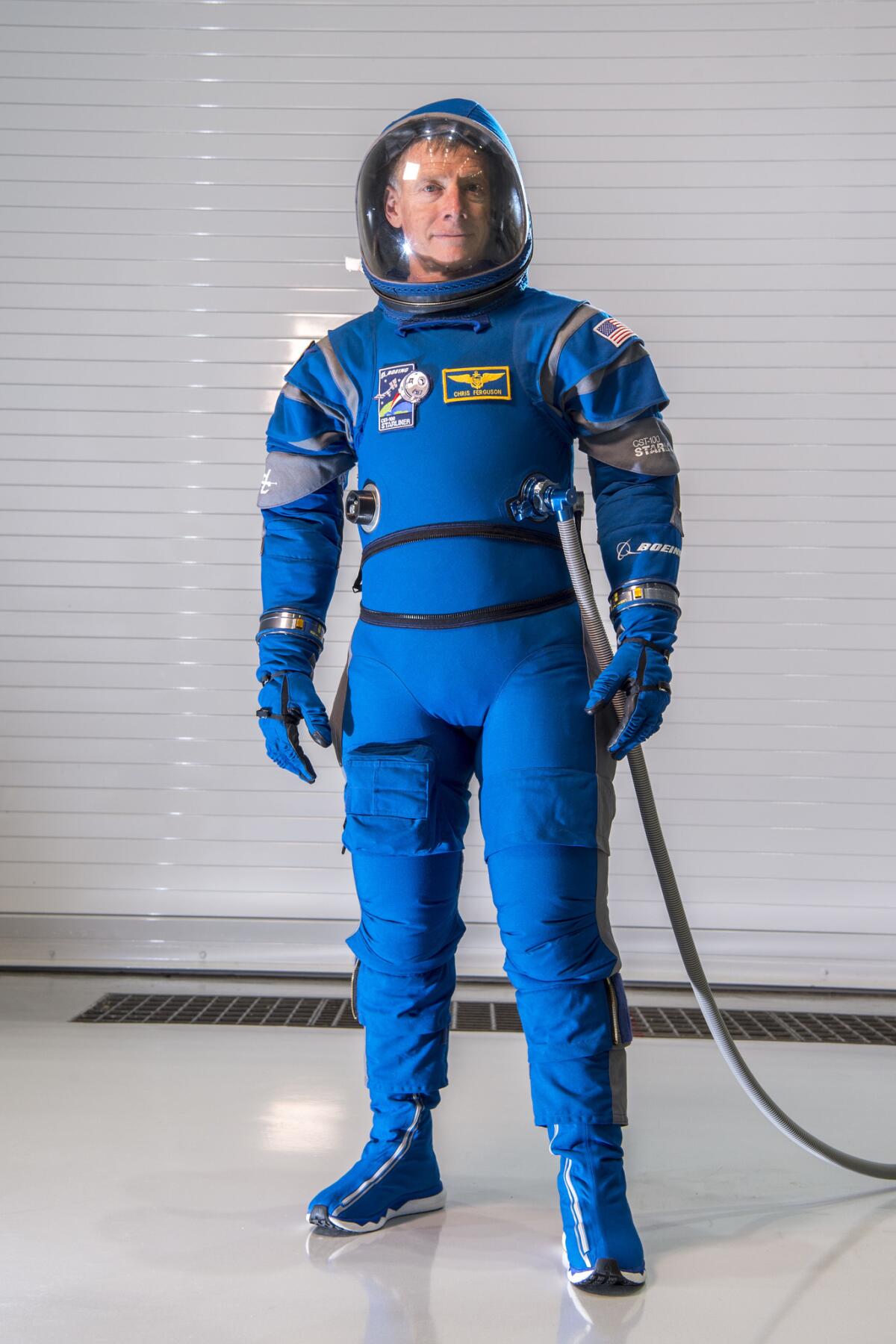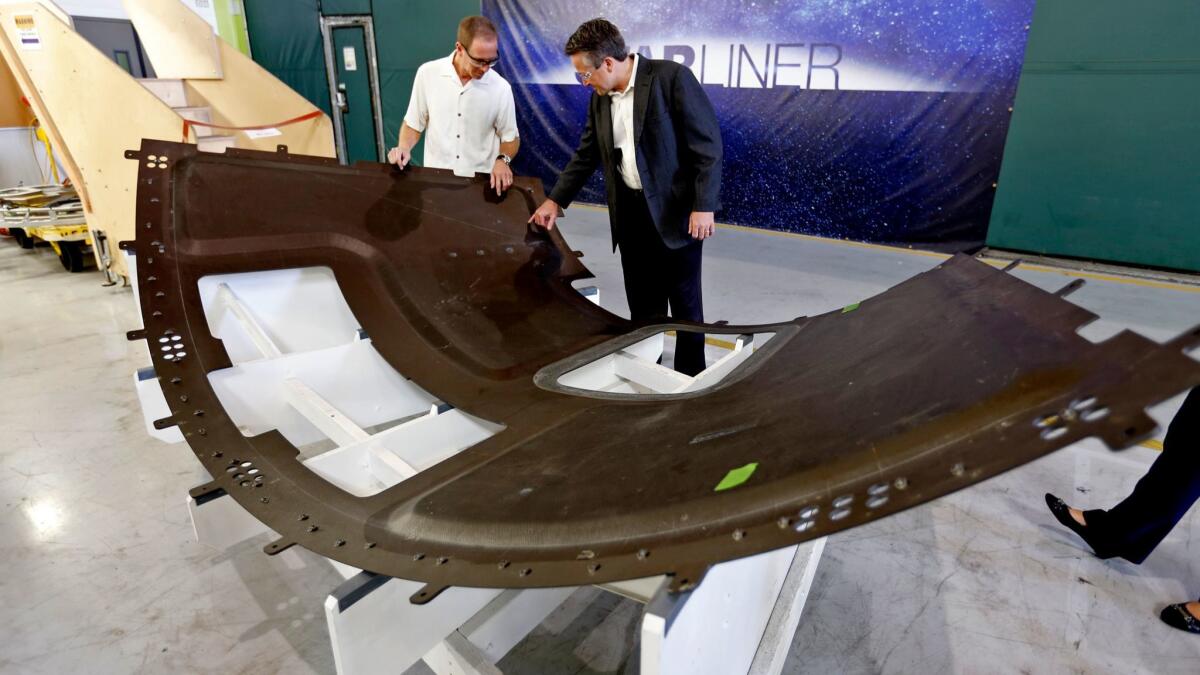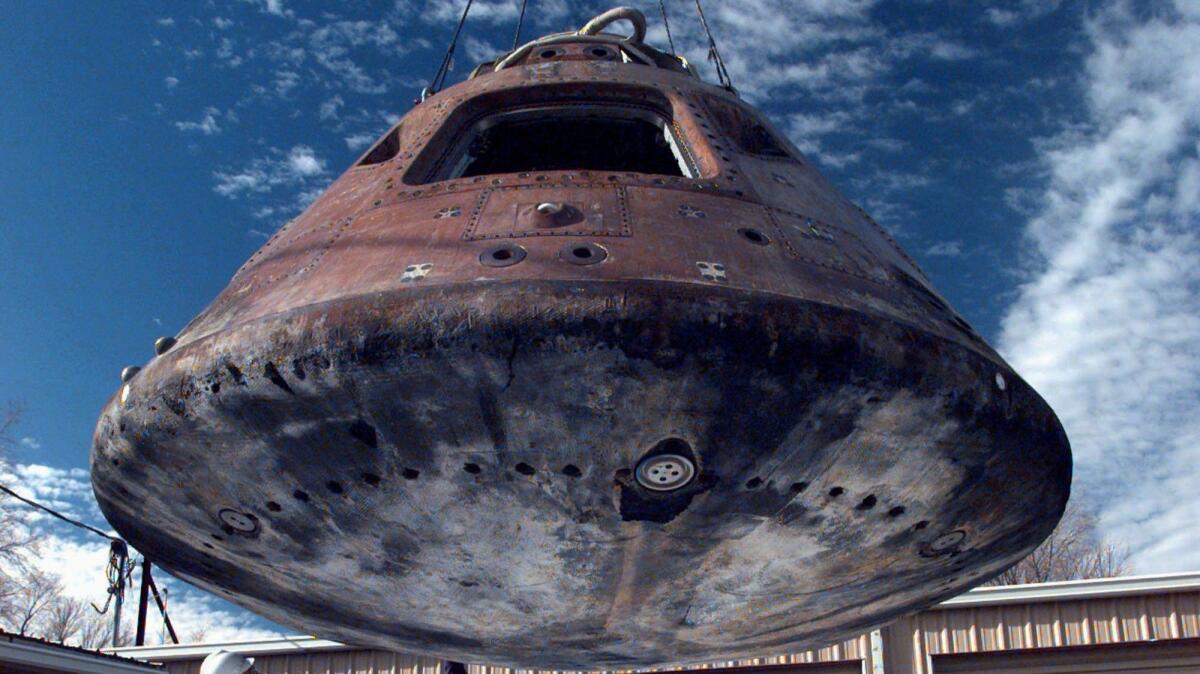U.S. astronauts are climbing back into space capsules. Here’s how they’ve improved over the past 50 years

Boeing Co. and SpaceX are bringing back gumdrop-shaped capsules in developing spacecraft under NASA contracts to ferry astronauts to the International Space Station. (Sept. 15, 2017) (Sign up for our free video newsletter here http://bit.ly/2n6VKPR)
In 1961, an American astronaut reached space for the first time and soared through the heavens in a gumdrop-shaped capsule.
Since then, people have flown to the moon, created space planes and designed rockets that return to Earth for precision landings. But when astronauts lift off next year from U.S. soil for the first time in six years, their vehicle of choice will be another capsule.
Despite the sleek spaceships of sci-fi imaginings or the familiar winged body of the shuttle, engineers have returned to the seemingly clunky capsule again and again for a simple reason — it works.
“The capsule is a very durable technology,” said Matthew Hersch, assistant professor of the history of science at

Since the end of the shuttle program, the U.S. has relied on Russia to transport its astronauts to and from the space station in the Soyuz spacecraft, another capsule.
Boeing and SpaceX said they are confident their vehicles will fly next year, despite recent reports from the U.S. Government Accountability Office noting that delays for the two companies have pushed the first test flights past the initial deadline.
The new spacecraft have a number of features that weren’t available on earlier capsules — touchscreen displays, large windows, more powerful electronics and lighter materials.
The spacesuits that astronauts will wear also have been slimmed down. SpaceX has released several photos of its spacesuit, which Chief Executive

Back in the early days of the U.S. space program, astronauts lamented riding in anything that allowed for such limited human control. Borrowing the name from something you swallow didn’t enhance the appeal.
Initially, there was great enthusiasm for making those spacecraft look like airplanes, but it was difficult to create wings that could navigate various parts of a mission and survive the heat of reentry, Hersch said.
Any spacecraft rated to carry humans has a specific set of requirements. It must be efficient in its volume with enough space for all necessary life systems, but have as low mass as possible. It also has to withstand tremendous g-forces, pressure and heat during launch and reentry.
The heat shield on a capsule’s blunt, slightly curved bottom helps protect the crew as the vehicle reenters the atmosphere.
Capsules are aerodynamically stable when traveling at supersonic speeds during reentry and require little maneuvering to return to Earth in an emergency, giving them “inherent stability,” said David Giger, senior director of Dragon development engineering at SpaceX.
“What’s really interesting about capsule design is it’s aerodynamically efficient both on ascent and descent,” said David Barnhart, director of the USC Space Engineering Research Center. “It only takes one event to take it back down, which is essentially a reentry burn, and that’s good because it minimizes moving parts and complexities.”

In creating spacecraft for NASA’s commercial crew program, both Boeing and SpaceX have built on the example of their predecessors.
Boeing constructed its design based on some of the data from the 1950s and 1960s era Mercury and Gemini, as well as NASA’s
Rob Adkisson, Boeing’s chief engineer for the commercial crew program, said the CST-100 Starliner’s compact capsule design matches its mission as a “people mover,” compared to the larger space shuttle that essentially functioned as a “truck back and forth.”
“It looks a lot like Gemini and Mercury,” he said of the Starliner. “But it’s quite a bit different.”
The Chicago aerospace giant’s Starliner will blast into space on an Atlas V rocket before deploying and docking autonomously at the space station. Upon its return to Earth, the spacecraft will jettison its service module, deploy parachutes to slow down and drop its heat shield so the vehicle’s airbags can inflate for a softer ground landing.

Mannequins riding the Starliner during a recent test were “barely jostled” inside, Adkisson said. The capsule is designed to be reused 10 times.
A version of the capsule is undergoing tests at a Boeing facility in Huntington Beach where space structures like Apollo, the original Delta and Delta II rockets and parts of the space station were also cleared before their missions. The CST-100 Starliner capsule is set to make its debut test flight in June 2018, with a crewed test flight two months later.
“You design robust margins into what you do, demonstrate that everything operates as we expect it to,” Adkisson said. “That gives us a lot of confidence and gives our customer a lot of confidence that we’ve got it nailed.”
One major development is the fine-tuning of the capsule’s heat protection. The Starliner’s base heat shield has an ablator, a proprietary material that absorbs energy on reentry and only chars “like a marshmallow,” said David Schiller, leader of Boeing’s commercial crew aerostructures integrated product team.

The base heat shield and its four backshells located around the crew vehicle are made of composite materials. A glass/phenolic honeycomb core is wedged between the composite layers, like an ice cream sandwich, to provide high strength while staying lightweight. The entire vehicle is covered with thermal protection, including a type of woven ceramic “blanket” similar to the ones used on the space shuttle, and ceramic tiles on the backshells to deflect heat.
Like Boeing, SpaceX also looked to previous capsules when it first embarked on its Dragon spacecraft.
Back then, the Hawthorne company was still very young, so engineers looked back at the legacies of Mercury, Gemini and the moon program’s Apollo. The lessons are incorporated in its Dragon 2 crew transporter capsule, along with those learned from developing SpaceX’s Dragon 1 vehicle, currently used by NASA to take supplies to the space station.
The Dragon 2’s abort system is a marked change from Apollo, which used a rocket on a tower located at the top of the capsule and was discarded on the way up to orbit. SpaceX’s launch abort system can be used at any time during the entire ascent trajectory and stays on the capsule so it can be recovered on splashdown — part of the company’s emphasis on reusability, said Giger of SpaceX.

Dragon 2 will also utilize more advanced avionics technology than was possible during Apollo — the capsule’s avionics draw less than half the power of the Apollo spacecraft and lunar module combined — and the avionics are smaller and can be consolidated into fewer numbers of components. The most obvious example is the touchscreen displays inside the capsule.
The SpaceX capsule will also utilize more automation, such as its docking ability, to improve safety and allow crew to focus on crucial tasks, he said. The company is also working on developing the capsule’s precision landing capability in the ocean so recovery crews can arrive within minutes.
“Just because it looks like a capsule does not mean the inherent technology is the same,” Giger said.
Dragon 2, which will ride into space on a Falcon 9 rocket, is set to make its first test flight in February 2018, and a crewed flight will come four months later.
In the meantime, the capsule’s hardware is going through qualification testing and software is being developed and evaluated, said Garrett Reisman, director of space operations at SpaceX and a former NASA astronaut who flew on two space shuttle missions.
“We’re trying to take a giant leap forward in safety,” he said. “We have the opportunity to do that through design, improvements in technology and also by leveraging all the history that our partner NASA brings to the table ... to make sure we don’t repeat mistakes made in the past.”

Twitter: @smasunaga
ALSO
Cassini, the NASA spacecraft that expanded the search for life beyond Earth, dies in Saturn’s sky
As NASA’s Cassini mission flames out over Saturn, scientists mark bittersweet end of mission
‘OK. Let’s do it!’ An oral history of how NASA’s Cassini mission to Saturn came to be
‘I’m not sad. I’m thinking how lucky I am’: Humanity says goodbye as Cassini plunges to its death




